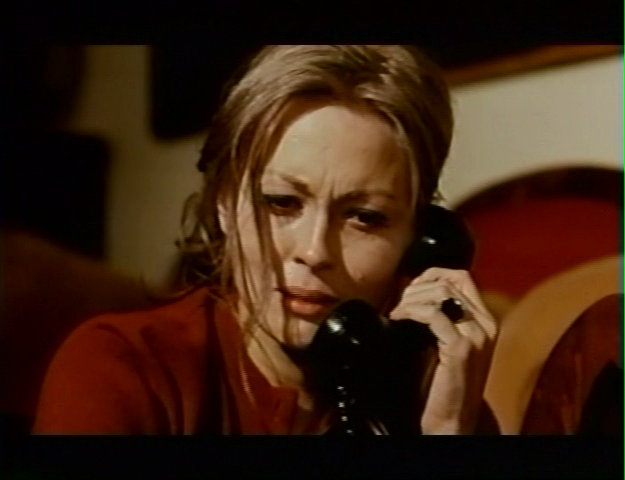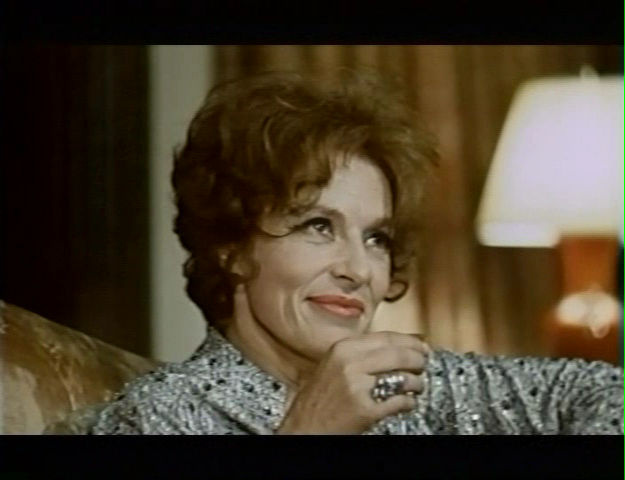“I’m not adding up to anything, am I, Aaron? I’m not making any sense.”
|

Synopsis:
When visited by an old boyfriend (Barry Primus) hoping to make a film about her, a former fashion model (Faye Dunaway) recovering from a mental breakdown reflects on her rocky past and relationships.
|
|
Genres, Themes, Actors, and Directors:
- Faye Dunaway Films
- Flashback Films
- Mental Breakdown
- Models
- Roy Scheider Films
Review:
Faye Dunaway’s committed central performance is the primary saving grace of this pretentious flashback film, which is ultimately merely an ineffective imitation of its more esteemed cinematic peers (most notably 1965’s similarly themed Darling). Despite Dunaway’s best efforts, it’s impossible to care much about the film’s self-absorbed protagonist (loosely based on screenwriter Carole Eastman), whose rise and fall from fame is utterly unremarkable (a climbing star becomes petulant and difficult to work with? impossible to imagine!), and whose mental breakdown is never fully explained or justified. When Dunaway says to Primus early on in the film, “I don’t know why you want to make a film about me”, we can’t help agreeing.
Redeeming Qualities and Moments:
- Faye Dunaway as Lou

- Viveca Lindfors as Lou’s agent

- Creative visuals and editing

Must See?
No; despite its provocative title, this one can easily be skipped. Listed as a Sleeper in the back of Peary’s book.
Links:
|
One thought on “Puzzle of a Downfall Child (1970)”
First viewing. Skip it is right. Your basic Snoresville.
An indulgent movie with an indulgent script that affords Dunaway an opportunity to deliver an indulgent performance. Actors often love the chance at this kind of (ahem) ‘character study’ cause they sense critics will be quick to toss out ‘tour de force’.
The only ‘force’ here is keeping your eyes open.
That said, the film allows for some particularly bizarre bits:
Hear Faye (whose ‘incisive’ portrait is peppered with major yawns such as “I’m a little worn out from trying to look wonderful.”) dramatically request that a toilet seat be kept up; hear her passionately talk about suicide without, unfortunately, committing it; hear her being told “There was a period of time when you weren’t doing so well…” (Would that have been, perhaps, her character’s entire life?)
For me, the most ‘successful’ moment (a fantasy scene) comes late: Faye (in white) is hospitalized and her doctor (of course, in white) takes her from an all-white room to one next door – revealing that a number of people who have worked closely with her are all lumped in as patients as well.
There is also a tad of amusement to be found in Faye’s sequence with a booking agent who tells Faye that something really must be done about the growing list of names Faye has been adding to – of people she refuses to work with ever again. After Faye tells the agent that she’s insane for having such a list, she goes through it herself to remind herself of who, in her wacky mind, she’s decided (again) that she loves after all.
But basically the film is slow torture. Director Schatzberg and, esp. editor Evan Lottman attempt to serve up art-house stuff by, indeed, making the whole thing look like a puzzle being pieced together and, often, making it seem we’re watching many pieces as forced fits. All to no avail.
After a first career chapter as a varied actress, it’s unsatisfying to see Lindfors here in her second chapter playing yet another world-weary, creative sophisticate.
Oddest of all, and to a degree this could be a fault of the script, Faye does not convince as a model.
I can’t imagine this movie made a dime.